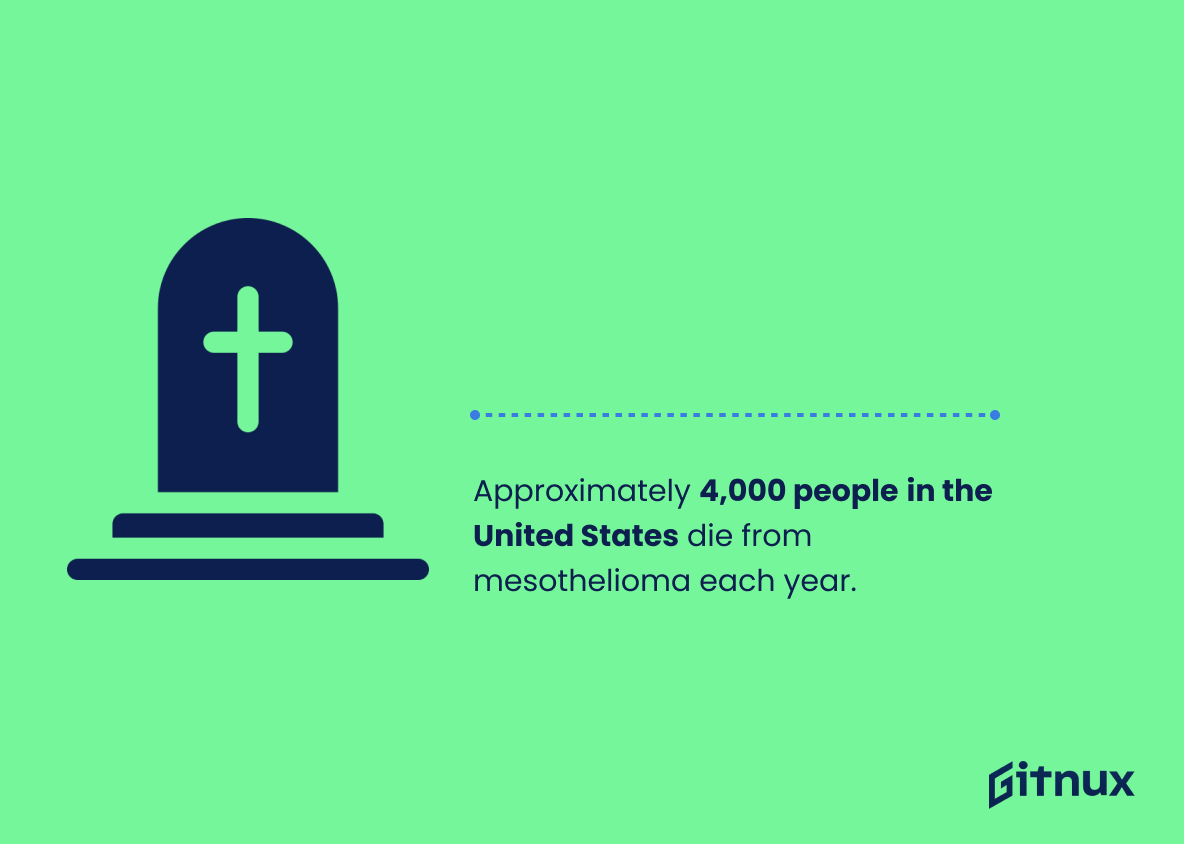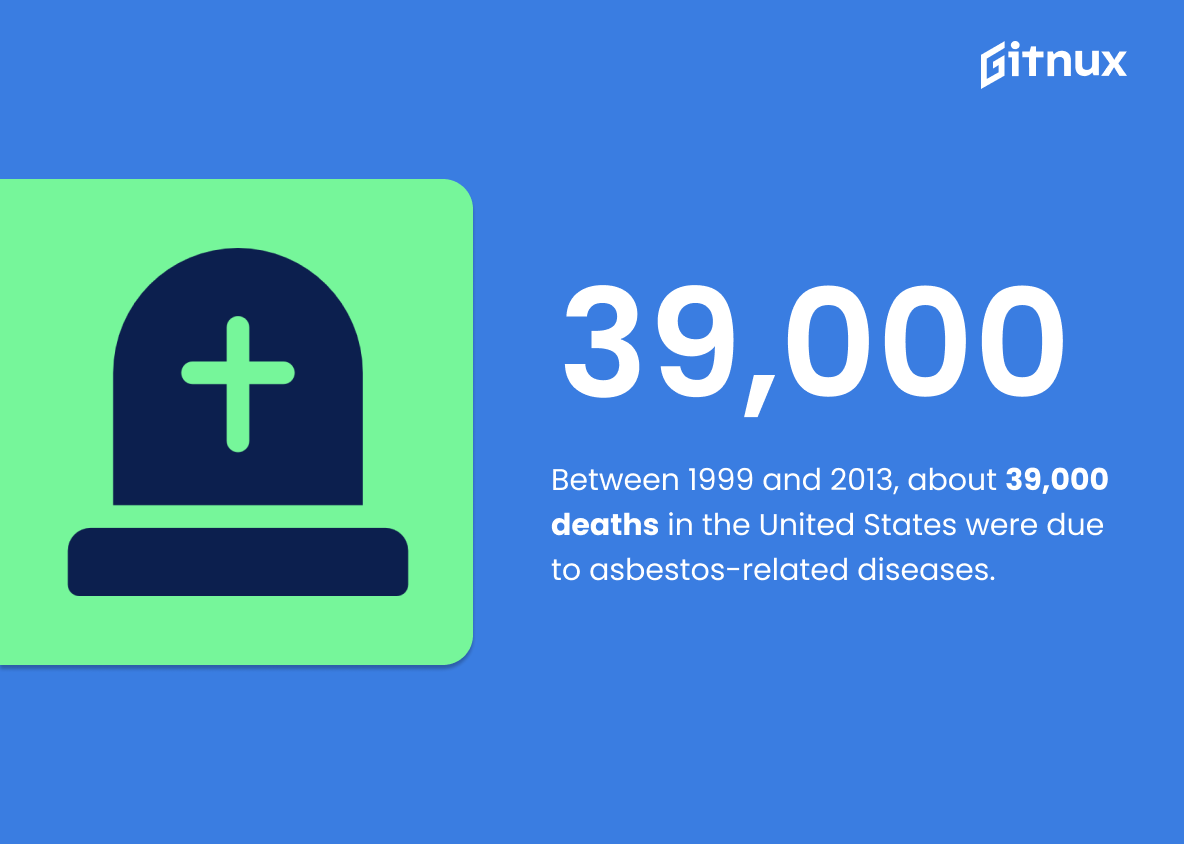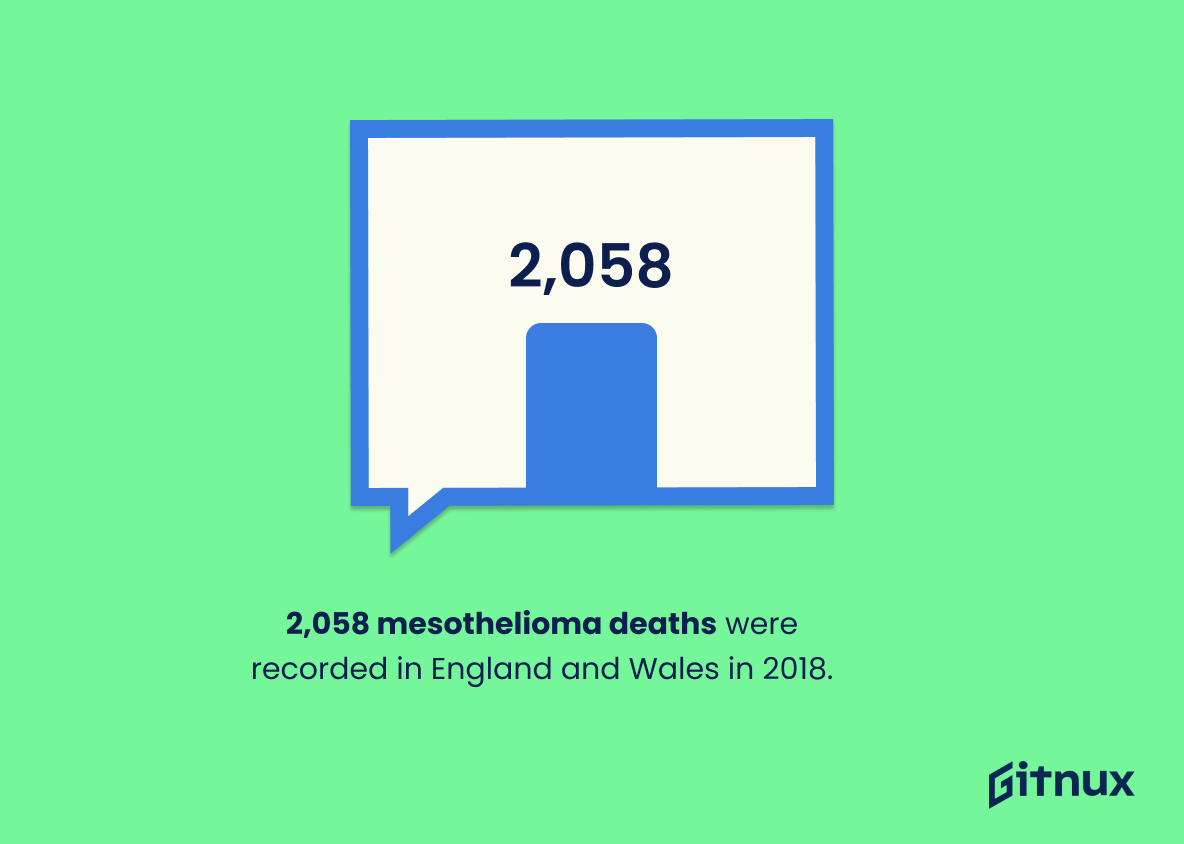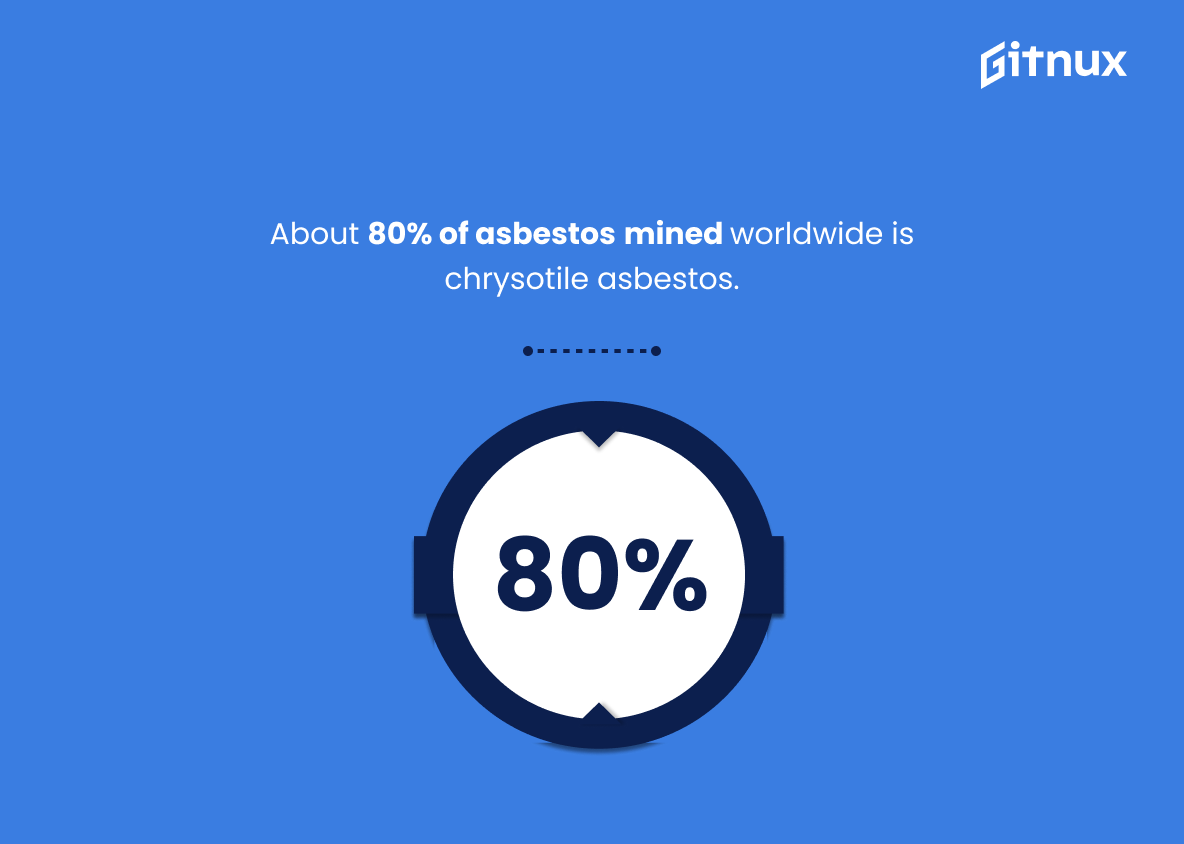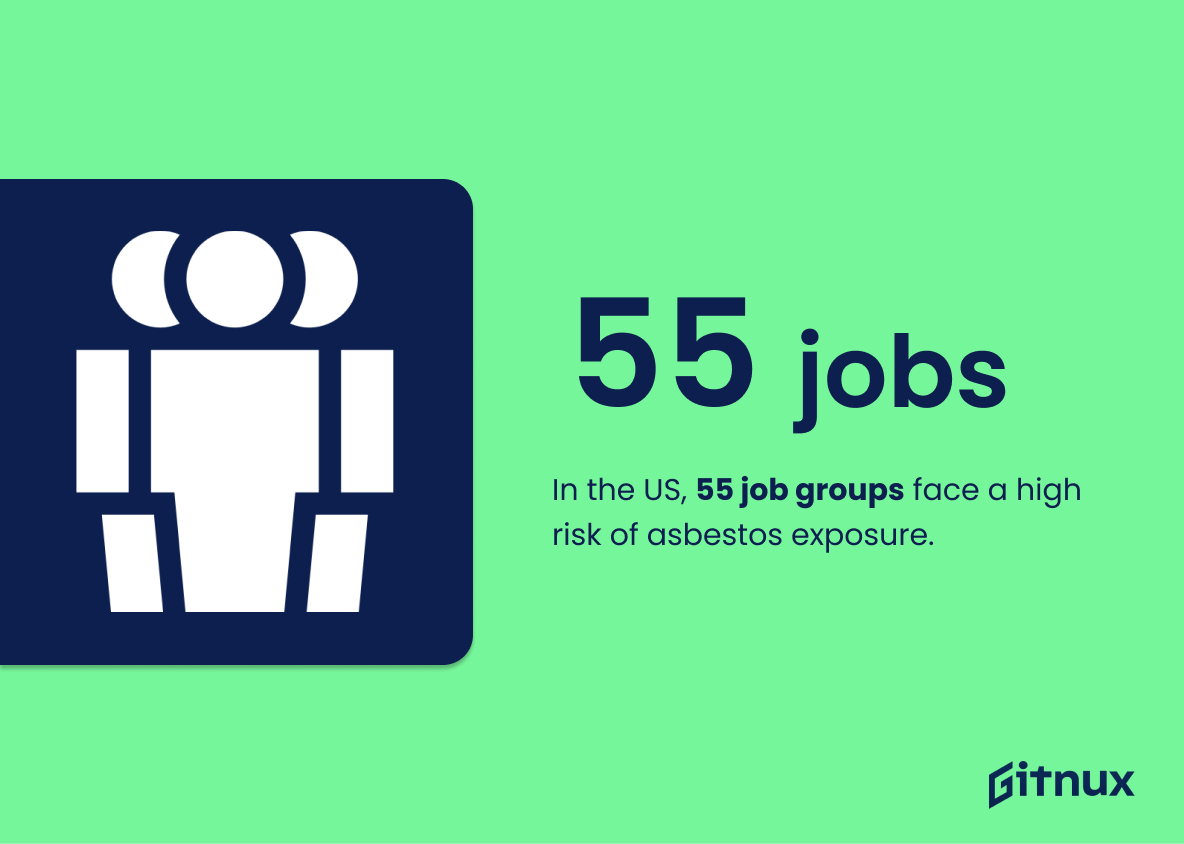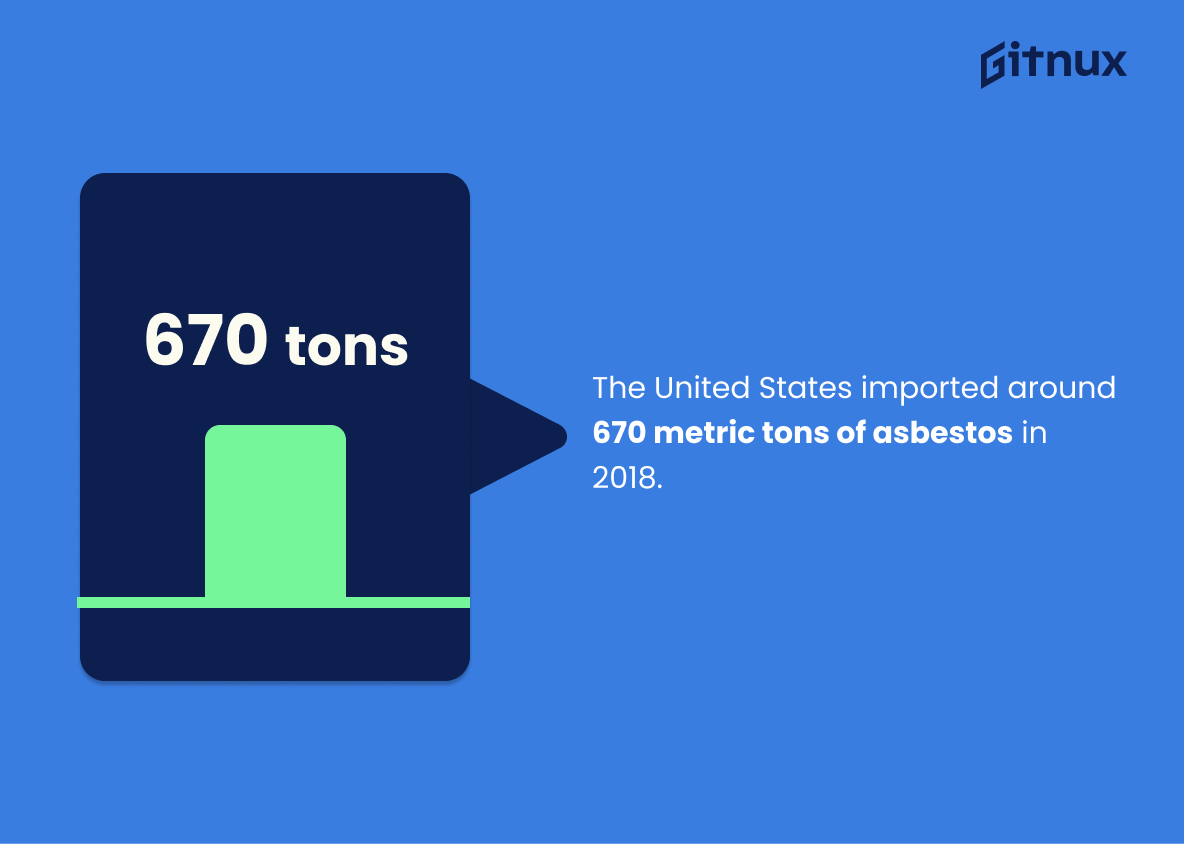Asbestos is a hazardous material that has been linked to numerous health issues, including cancer. It’s estimated that 255,000 people die annually from asbestos-related diseases worldwide and approximately 125 million are exposed in the workplace. Asbestos-related illnesses can take 20-50 years to develop after exposure, which makes it difficult for those affected by it to receive proper treatment or compensation. Over 50 countries have banned the use of asbestos due to its dangers; however, many still allow its importation and production despite knowing the risks associated with it. In this blog post we will explore some statistics related to asbestos usage around the world as well as how many lives are impacted each year by this dangerous substance.
This statistic is a stark reminder of the devastating impact asbestos has had on people’s lives. It serves as a powerful reminder of the need to take action to reduce the number of deaths caused by asbestos exposure. It is a call to action to ensure that asbestos is properly managed and that people are aware of the risks associated with it.
Approximately 125 million people are exposed to asbestos in the workplace.
This statistic is a stark reminder of the prevalence of asbestos in the workplace, highlighting the need for greater awareness and action to protect workers from the dangers of asbestos exposure. It is a call to action for employers to take the necessary steps to ensure their employees are safe from the hazardous effects of asbestos.
Asbestos Statistics Overview
Asbestos-related diseases, like mesothelioma, can take 20-50 years to develop after exposure.
This statistic serves as a stark reminder that the effects of asbestos exposure can be far-reaching and long-lasting. It highlights the importance of taking the necessary precautions to protect oneself from asbestos exposure, as the consequences may not be seen for decades.
Over 50 countries, including the entire European Union, have banned the use of asbestos.
This statistic is a powerful testament to the dangers of asbestos. It shows that the world is taking the issue seriously, with over 50 countries taking action to protect their citizens from the hazardous material. This is a clear indication that asbestos is a serious health hazard and should not be taken lightly.
Approximately 4,000 people in the United States die from mesothelioma each year.
This statistic is a stark reminder of the devastating effects of asbestos exposure. It serves as a reminder that asbestos is still a major health hazard, and that it is important to take steps to protect ourselves and our loved ones from its dangers. It also highlights the need for continued research and advocacy to reduce the number of mesothelioma deaths each year.
The World Health Organization estimates that one in every three occupational cancer fatalities is caused by asbestos exposure.
This statistic is a stark reminder of the devastating effects of asbestos exposure. It highlights the fact that asbestos is a major contributor to occupational cancer fatalities, and that it should not be taken lightly. It serves as a warning to those who may be exposed to asbestos in their workplace, and emphasizes the importance of taking the necessary precautions to protect oneself from its harmful effects.
An estimated 1.3 million American workers in construction and general industry are at risk of asbestos exposure.
This statistic is a stark reminder of the potential danger that asbestos poses to American workers. It highlights the fact that, despite the known risks, many people are still exposed to asbestos in their daily lives. This statistic serves as a call to action for employers to take the necessary steps to protect their employees from the hazardous effects of asbestos.
Between 1999 and 2013, about 39,000 deaths in the United States were due to asbestos-related diseases.
This statistic is a stark reminder of the devastating effects of asbestos-related diseases. It serves as a powerful reminder of the importance of understanding the risks associated with asbestos exposure and taking the necessary steps to protect oneself and others from its potentially deadly consequences.
2,058 mesothelioma deaths were recorded in England and Wales in 2018.
This statistic is a stark reminder of the devastating impact asbestos can have on people’s lives. It highlights the fact that mesothelioma, a type of cancer caused by asbestos exposure, is still a major public health issue in England and Wales. It is a sobering reminder that asbestos is still present in many buildings and that people are still being exposed to it, with potentially fatal consequences.
107,000 people die each year globally from asbestos-related lung cancer, mesothelioma, and asbestosis due to occupational exposure.
This statistic is a stark reminder of the devastating effects of asbestos exposure in the workplace. It serves as a reminder of the importance of taking the necessary precautions to protect workers from the hazardous material. It also highlights the need for employers to be aware of the risks associated with asbestos and to take the necessary steps to ensure the safety of their employees.
Six types of asbestos are part of the amphibole mineral family and one is part of the serpentine family (chrysotile).
This statistic is important to consider when discussing asbestos statistics because it highlights the fact that there are two distinct families of asbestos minerals, amphibole and serpentine. Knowing this can help to better understand the different types of asbestos and the potential health risks associated with each.
About 80% of asbestos mined worldwide is chrysotile asbestos.
This statistic is significant in the context of a blog post about Asbestos Statistics because it highlights the prevalence of chrysotile asbestos in the global asbestos market. It is important to note that chrysotile asbestos is the most commonly used form of asbestos, and its prevalence in the global market indicates that it is still widely used despite its known health risks.
In the United States, 55 occupational groups have been identified as having an elevated risk for asbestos exposure.
This statistic is a stark reminder of the prevalence of asbestos exposure in the United States. It highlights the fact that a large number of occupations are at risk of being exposed to asbestos, and that this is a serious issue that needs to be addressed. It also serves as a warning to those who may be unaware of the dangers of asbestos exposure, and the need to take precautions to protect themselves.
The global asbestos market value reached $290 million in 2020.
This statistic is a stark reminder of the continued presence of asbestos in the global market, despite its known health risks. It is a testament to the fact that asbestos is still being used in many industries, and that more needs to be done to reduce its prevalence.
Approximately 2 million metric tons of asbestos was produced worldwide in 2020.
This statistic is a stark reminder of the prevalence of asbestos in our world today. It highlights the sheer amount of asbestos that is still being produced, despite the known health risks associated with it. This statistic serves as a call to action to reduce the production of asbestos and to take steps to protect people from its dangerous effects.
The United States imported around 670 metric tons of asbestos in 2018.
This statistic is a stark reminder of the prevalence of asbestos in the United States. Despite the known health risks associated with asbestos, it is still being imported in large quantities, indicating that it is still being used in many industries. This statistic serves as a warning to those who may be exposed to asbestos, and highlights the need for further regulation and awareness of the dangers of asbestos.
In the UK, more than 5,000 asbestos-related disease deaths, including mesothelioma, occurred in 2017.
This statistic is a stark reminder of the devastating impact asbestos-related diseases can have on individuals and their families. It serves as a reminder of the importance of understanding the risks associated with asbestos and taking the necessary steps to protect oneself from exposure. It also highlights the need for continued research and development into treatments and cures for asbestos-related diseases.
Conclusion
The statistics presented in this blog post demonstrate the devastating effects of asbestos exposure on a global scale. Asbestos is responsible for an estimated 255,000 deaths annually worldwide and approximately 125 million people are exposed to it in the workplace. Furthermore, over 50 countries have banned its use due to its known health risks which can take 20-50 years after initial exposure to manifest as diseases like mesothelioma or lung cancer. In the United States alone, 4,000 people die from mesothelioma each year and 1.3 million workers are at risk of being exposed while imports increased by 2,000 metric tons between 2017 and 2018. Globally there were 107,000 occupational related deaths due to asbestos with chrysotile accounting for 95% of all used globally in 2008; however more than 5 thousand such cases occurred just within UK borders during 2017 alone resulting in an economic burden exceeding $200 billion per annum across US only. It is clear that despite bans imposed by many nations around the world including EU members – much still needs be done if we wish to reduce these alarming figures further down into future generations
References
0. – https://www.hse.gov.uk
1. – https://www.osha.gov
2. – https://www.atsdr.cdc.gov
3. – https://www.asbestos.com
4. – https://www.who.int
5. – https://www.ons.gov.uk
6. – https://www.usgs.gov
7. – https://www.cancer.org
8. – https://www.ncbi.nlm.nih.gov
9. – https://www.ihs.com
10. – https://www.cdc.gov


